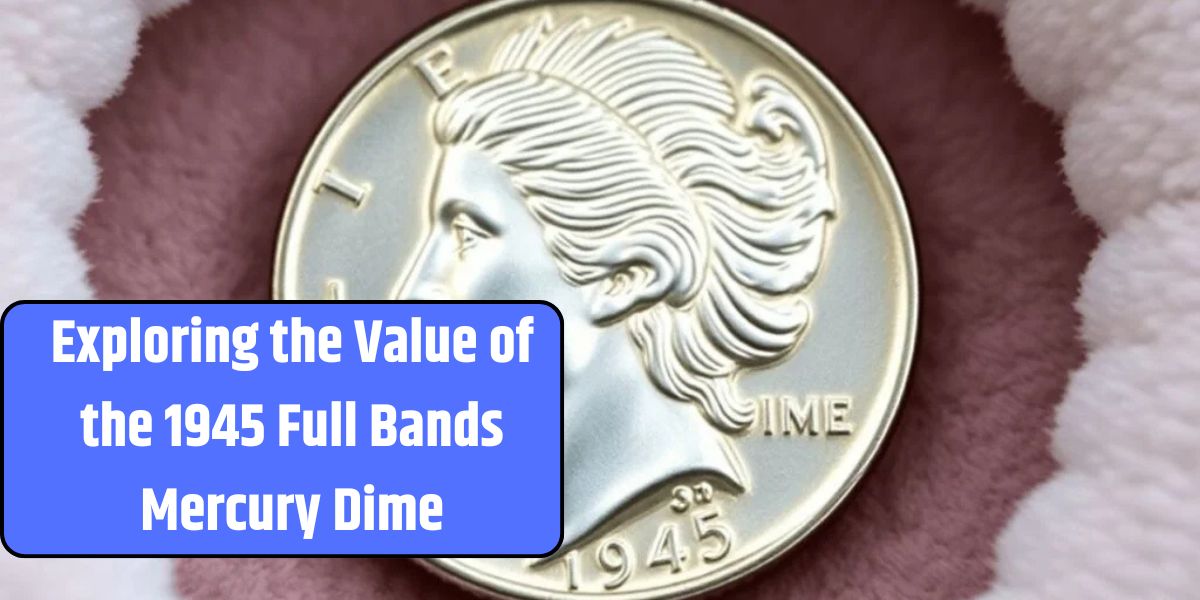The 1945 Mercury Dime has garnered significant attention among collectors, particularly those seeking coins in near-perfect condition. While most of these dimes hold modest value, one rare version recently fetched a staggering $72,000 at auction. This remarkable sale raises an intriguing question: what makes this particular coin so valuable? Let’s explore its rich history, distinctive features, and the factors driving its extraordinary worth.
A Brief History of the Mercury Dime
The Mercury Dime, officially known as the Winged Liberty Head Dime, was designed by renowned sculptor Adolph A. Weinman and minted between 1916 and 1945. Contrary to popular belief, the coin does not feature the Roman god Mercury but rather a depiction of Liberty wearing a winged cap, symbolizing freedom of thought. The reverse side of the coin showcases a fasces—a bundle of rods symbolizing unity and strength—paired with an olive branch, representing peace. This intricate design has made the Mercury Dime a favorite among numismatists (coin collectors).
Key Factors Driving the 1945 Mercury Dime’s Value
The value of a 1945 Mercury Dime, particularly one that achieved a $72,000 auction price, is influenced by several critical factors. Let’s delve into what sets this coin apart in the collector’s market.
1. Full Bands Designation
A major factor in determining a Mercury Dime’s value is the “Full Bands” (FB) designation. This term refers to the clarity of the horizontal bands on the fasces on the coin’s reverse side. For a coin to earn a Full Bands designation, these bands must be fully separated and sharply defined, with no signs of wear. Given that most 1945 dimes circulated extensively, the bands often became worn down or blended. The presence of Full Bands makes these coins rarer and significantly more valuable.
2. Mint State Condition
The condition of the coin is paramount in assessing its value. Coins are graded on a scale from Poor (P-1) to Mint State (MS-70), with higher grades indicating minimal wear and damage. The 1945 Mercury Dime that sold for $72,000 was graded MS-68, indicating an almost flawless condition. Achieving such a high grade for a coin that circulated in the 1940s is extremely rare, thus enhancing its appeal to collectors.
3. Rarity and Collector Demand
Although over 159 million Mercury Dimes were minted in 1945, very few have survived in pristine, uncirculated condition with the Full Bands feature intact. This combination of rarity and condition drives intense demand among collectors, often leading to competitive auction prices. High-profile auctions can amplify this effect, with bidding wars pushing prices even higher.
Grading and Valuing Mercury Dimes
The table below provides a breakdown of the grading scale for Mercury Dimes and their approximate value range, which can help you assess the potential worth of a 1945 dime.
| Grade | Description | Value Range |
|---|---|---|
| Poor (P-1 to P-12) | Heavily worn, barely identifiable | $1 – $5 |
| Good (G-4 to G-20) | Moderate to heavy wear | $5 – $20 |
| Uncirculated (MS-60 to MS-70) | No signs of wear, mint condition | $30 – $500+ |
| Full Bands (MS-68) | Full separation of bands, nearly perfect | Up to $72,000 |
How to Identify a Valuable 1945 Mercury Dime
If you think you may have a valuable 1945 Mercury Dime, here are some steps to evaluate its potential worth:
- Examine the Bands: Inspect the fasces bands on the reverse side. If the bands are fully separated and show no signs of wear, your coin might be a Full Bands Mercury Dime, which can significantly increase its value.
- Assess the Condition: Carefully check for scratches, nicks, or other signs of wear. Coins without visible wear, known as “uncirculated,” typically hold higher value.
- Get It Professionally Graded: To accurately determine your coin’s grade, consider having it evaluated by a professional grading service like the Professional Coin Grading Service (PCGS) or the Numismatic Guaranty Corporation (NGC).
- Research Auction Prices: Review recent auction sales for similar coins to get a better understanding of the current market value.
Why Did This Coin Sell for $72,000?
The impressive auction price of this 1945 Mercury Dime was due to a combination of factors:
- Exceptional Condition: The MS-68 grade indicates a coin in near-perfect condition, which is exceptionally rare for a dime from this era.
- Full Bands Detail: The Full Bands designation enhances its rarity, as most circulated dimes show significant wear in these details.
- Scarcity: Only a limited number of 1945 dimes have been found with both high-grade and Full Bands features, making them highly sought after by collectors.
- Auction Dynamics: The competitive nature of auctions, especially high-profile ones, can significantly drive up prices due to the excitement and prestige of acquiring a rare coin.
FAQs
What is a 1945 Mercury Dime typically worth?
Most 1945 Mercury Dimes are valued between $1 and $5 if heavily worn. However, those in better condition, especially with a Full Bands designation, can be worth substantially more.
How can I tell if my Mercury Dime has Full Bands?
Check the fasces on the coin’s reverse. If the horizontal bands are sharply separated and show no signs of wear, it may qualify as a Full Bands Mercury Dime, which can significantly increase its value.
Why is the Full Bands designation important?
The Full Bands feature indicates a higher level of detail that usually wears down over time. Coins with clear and complete bands are much rarer and therefore more valuable.
What grading service should I use to assess my coin?
Reputable grading services include PCGS (Professional Coin Grading Service) and NGC (Numismatic Guaranty Corporation). These organizations are widely recognized for their accurate and reliable grading.
Does the auction setting impact the value of coins?
Yes, auctions can drive up coin prices, especially when multiple collectors compete to acquire rare items. The prestige and excitement of auctions often lead to higher-than-average sale prices.




